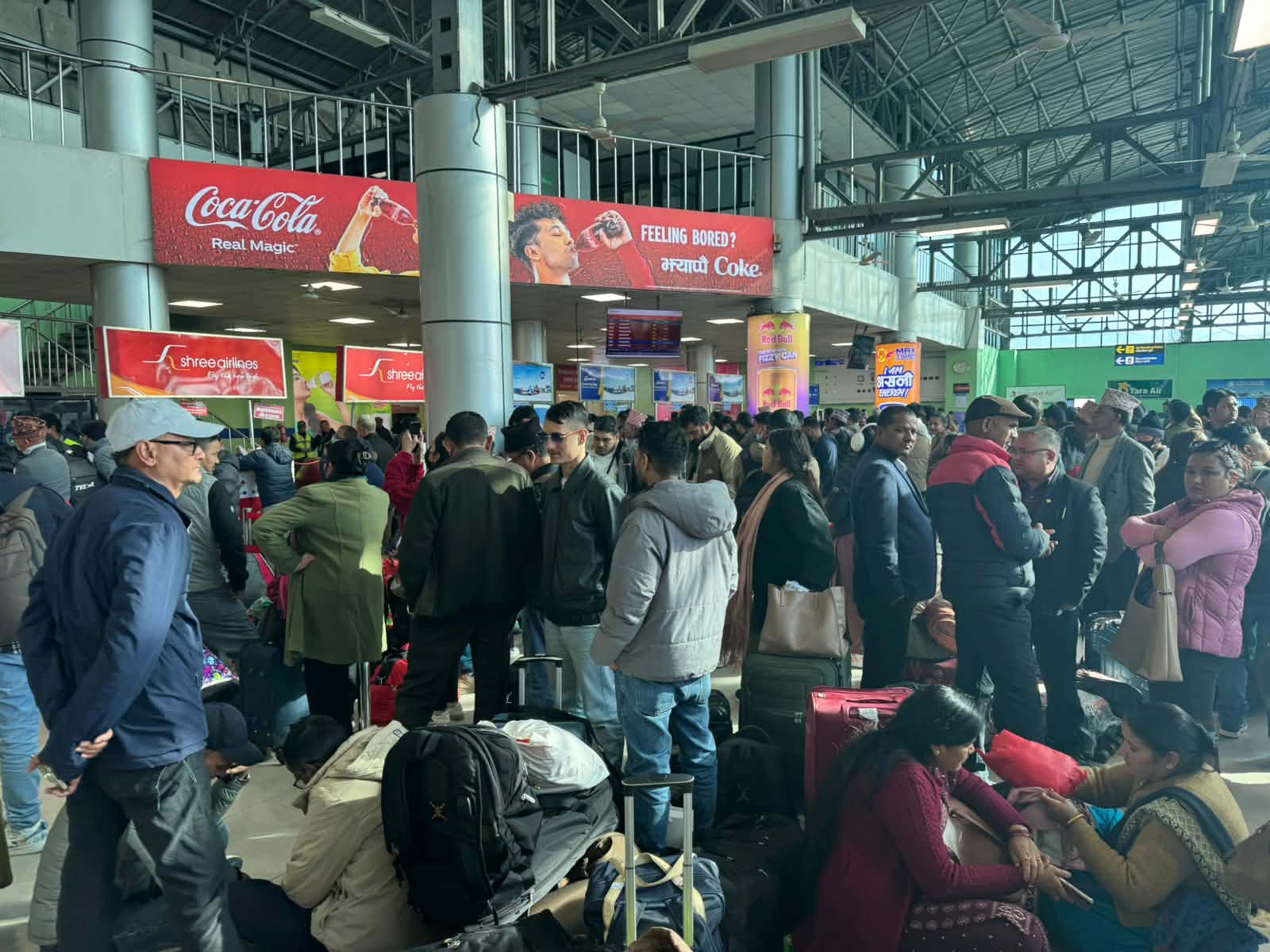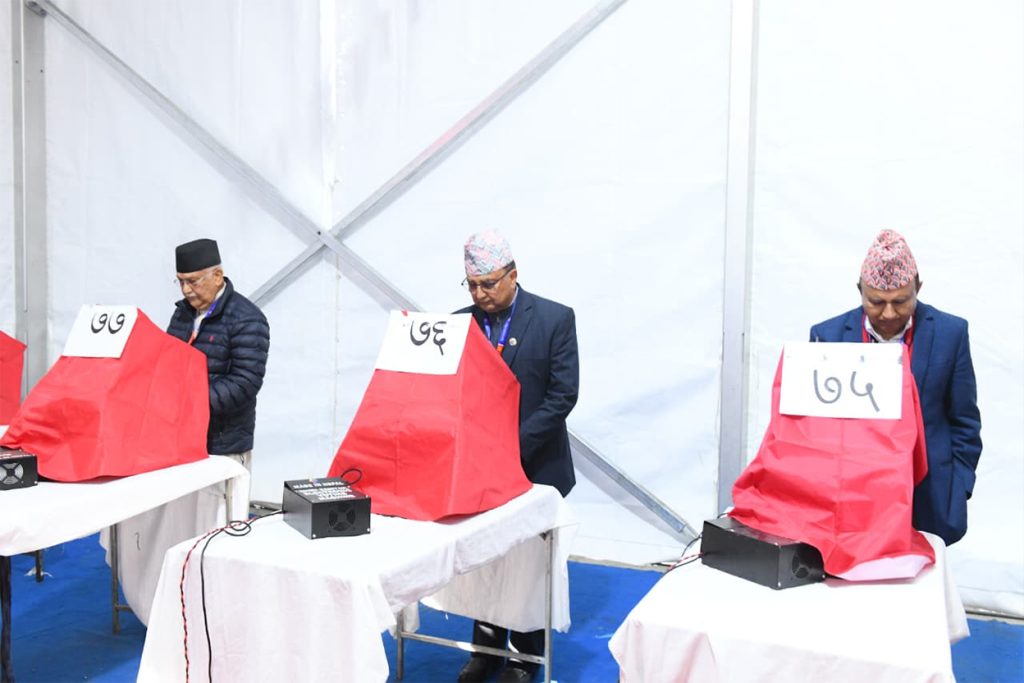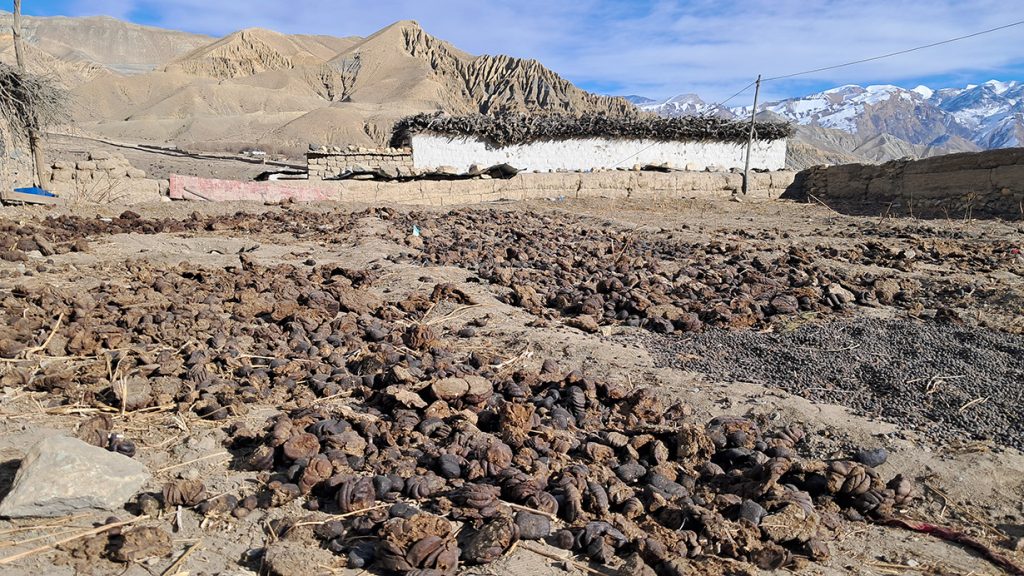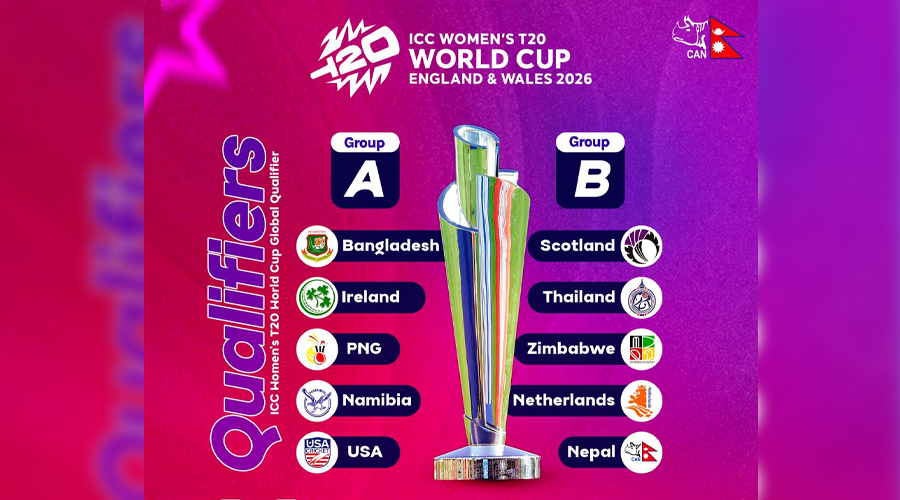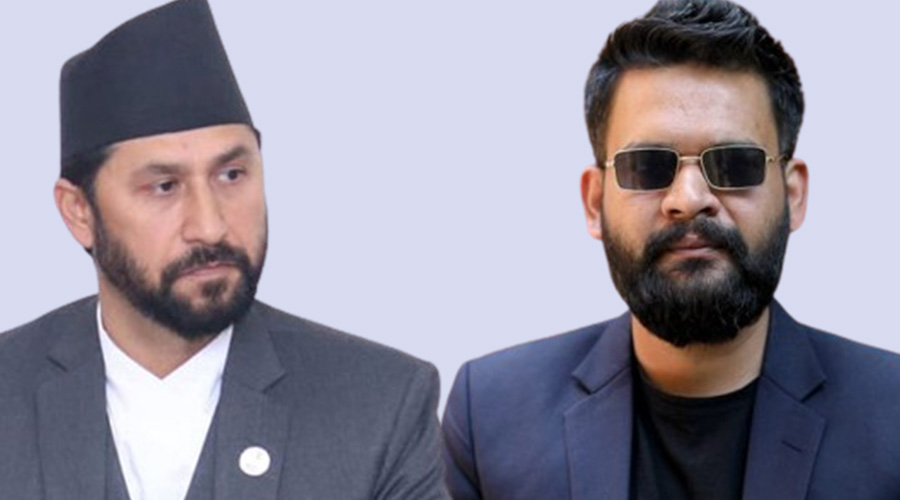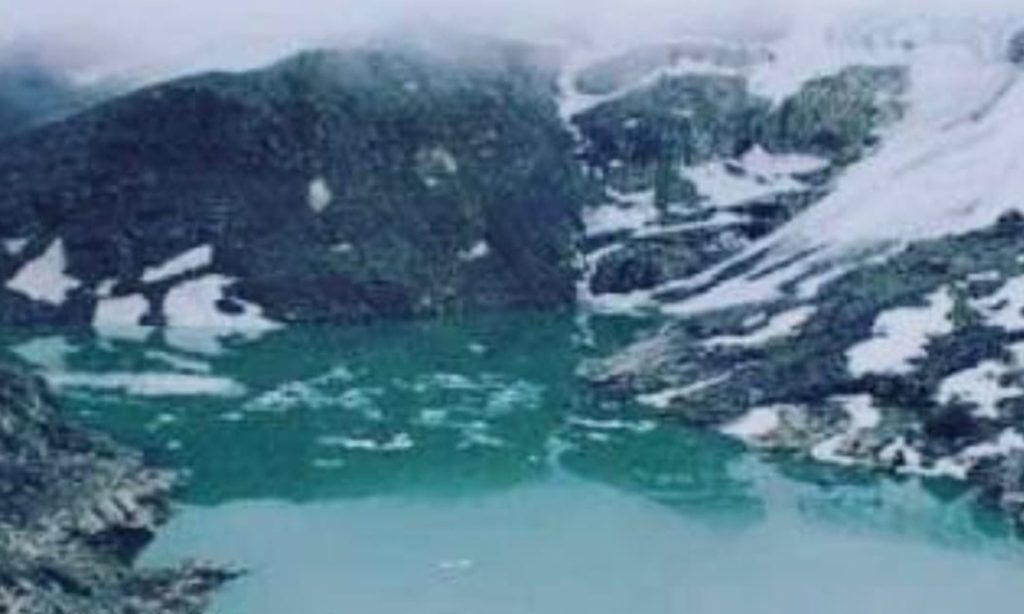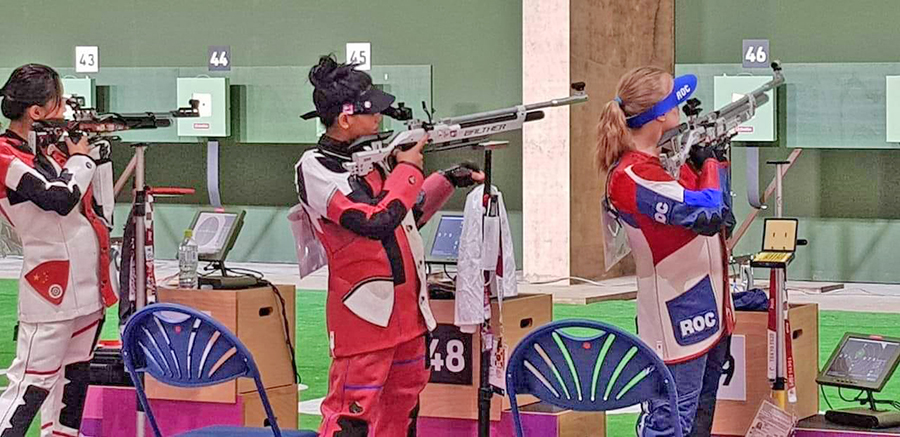
The sport of shooting in Nepal goes way back. Unlike other sports where Nepal just participates, the country’s shooting team actually competed for medals in both the Olympic Games and the Asian Games. There was even an instance when Nepal beat India to win a gold medal in shooting in the South Asian Games.
But, recently, shooting in Nepal has taken a backseat as it is currently fighting for its existence. Lack of infrastructure, equipment and management is killing the sport as those who have given their lives to the sport feel they have just wasted their time. Many have even left the country as they see no hope continue a sport that is discarded by everyone in the country.
Pride vs pain
In 1991, Anita Maharjan from Nepal beat Indian and Sri Lankan shooters to win the gold medal in the 10-metre air rifle event at the fifth South Asian Games. Two decades on, when Nepal hosted the 13th South Asian Games, the country’s shooting team could not even compete let alone win a medal in any event.
There were even cases where the rifle did not even go off, which shows how irresponsible the Nepal Shooting Association and Nepal Sports Council were in developing the sport of shooting in Nepal.
Shooting is one of the premier events during the Summer Olympics. Nepal has been taking part in shooting events in the Olympic games since 1988 when Parwati Thapa became the country’s first female olympian. Following Thapa, six others have taken part in the games in the shooting events.
In the recently held Olympic Games in Japan in 2021, Kapana Pariyar took part in the 10-metre air rifle event. She was a wild-card entry in the event. She could not do well and many knew she would not do well as she had practised with an old rifle given to her by the army.
“My training wasn’t adequate. Even though I was going to the Olympic games, I didn’t even have modern rifles, which was a major disadvantage for me,” she says.
Pariyar is a member of the Nepal Army. After she performed well during her army training, she was directly sent to the army’s sports department. It has been eight years since she has been shooting but says that nothing has changed in shooting in Nepal when it comes to preparations or training.
“Everything is the same. I train in the same manner when I take part in the national games and the Olympic Games,” she says, stating they have not been able to hire a foreign coach who would help take her and other shooters to the next level.
Plethora of problems
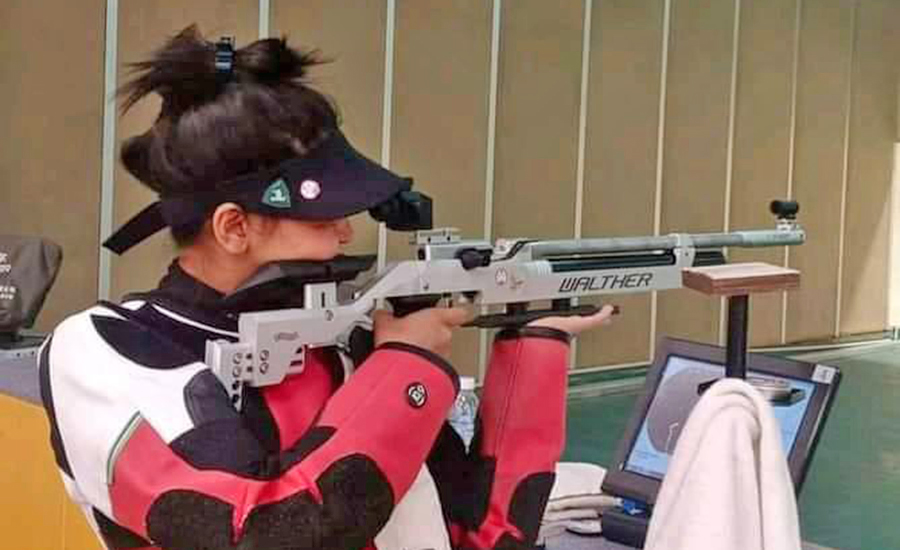
In other countries, shooting competitions are held regularly. In India, these events are held on a monthly basis and it has helped them improve substantially. In shooting in Nepal, competitions rarely happen. Kathmandu having the only international shooting range in the country does not help the sport either. And as the sport is quite expensive, not everyone has the reach or the will to take part in it. This has resulted in the sport being neglected by everyone.
“If we had competitions in Nepal, things would be different. But, shooting in Nepal does not even have future talents, which the country could groom. This is very sad for the sport,” says Pariyar, adding only the departmental teams (affiliated with Nepal Police, Nepal Army and Armed Police Force) have shooters. “The sport doesn’t have a future.”
And how would there be a future? With no tournaments, the shooters do not earn any prize money to help them sustain and buy better equipment. And as a result, the sport is not attractive anymore for athletes.
“I’m an Olympian, but I don’t feel that. I am in the army, and I’m doing my duty. If we had better infrastructure and foreign coaching, I believe I would do a lot better when I took part in international events,” she says.
A reason why shooting in Nepal has never taken off is the sport just does not have enough players that push each other to succeed. With the sport only being played in Kathmandu, it does not make sense for shooters from other parts of the country to come and train. And, with no sponsors or events to sustain, that is not practical.
Nepal Shooting Association also has not done enough to make the sport appealing at the local and provincial levels. And, with only departmental teams having shooters, shooting in Nepal will not evolve, believe stakeholders.
And, they are right. In Dang, there is hardly any shooting equipment so shooters are using bricks to train. Shooting’s national champion Arnab Ghimire is aiming to win a third gold medal in the upcoming National Games, but as he does not have guns, he feels he might not do as well as he had hoped.
“Dang has two rifles, but both are currently in a sorry state. We have no option but to hope for the best,” he says.
Hoping against hope
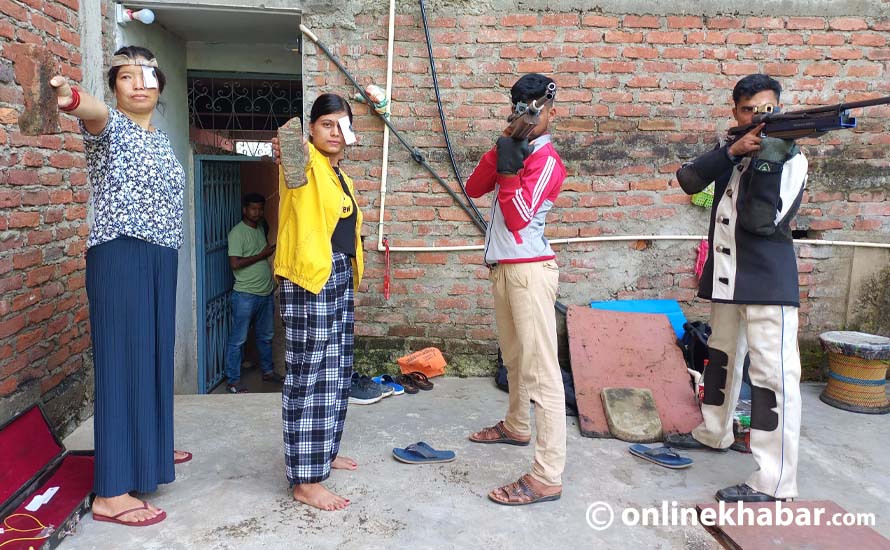
Recently, Asian Shooting Confederation has handed Pariyar some quality rifles, after which she hopes her performance will get better.
“What we’ve been able to achieve is due to our passion. We hope we get more help from the association and the government because we really want to perform better for our country,” says Pariyar.
Nepal Shooting Association’s president Pushpa Das Shrestha says the association is hopeful the newly built shooting range will aim to help create more shooters and overall develop shooting in Nepal. He also hopes the new range and infrastructure will develop the existing shooters in the country.
“We have all the equipment we need for the Asian Games,” he said.
Pariyar also feels that the new range and equipment will help shooting in Nepal, but they need to be taken to other parts of the country too.
In the past, there have been different instances where Nepali shooters have lost before they even went to compete as they had to take part in competitions with outdated equipment.
When Pariyar went to compete in the Tokyo Olympics, she did not have the proper equipment. Even though she knew she would beat a few people, due to her outdated equipment, she was morally down before she competed.
The association’s president Shrestha knows they cannot expect much from shooters like Pariyar as he knows they do not have the proper equipment.
“The equipment we have doesn’t meet the standards set by the International Sports Shooting Federation (ISSF). There have been times we’ve been left redfaced because we were disqualified from taking part due to our outdated equipment,” says Shrestha, adding the association has brought new equipment that meets the standards set by the ISSF.
Shooting coach Upendra Thapa says the development of shooting in Nepal is going at a snail’s pace. But, Thapa, like Shrestha, is hopeful that the new range and equipment will make things easier and help develop both new and current shooters in the country.
He believes the sport should also be introduced at the school and local levels, which will help bring produce more shooters.
When asked why the team did not do well in the South Asian Games and Tokyo Olympics, he said it was mostly due to poor preparation for shooting in Nepal. He says the shooters did not have enough time to practise before SAG and when the Olympics was around the corner, Covid obstructed practice drastically.
“The range in Kathmandu was under renovation so we couldn’t practice as much as we wanted,” says Thapa.
Thapa also believes that the coaching staff also need upgrading to develop shooting in Nepal.
“We seldom get training, but the ones we do get are the national ones. We needed to be trained international too. The association has been positive about this, so, hopefully, we will get the training before the Asian Games,” says Thapa.
This story was translated from the original Nepali version and edited for clarity and length.









